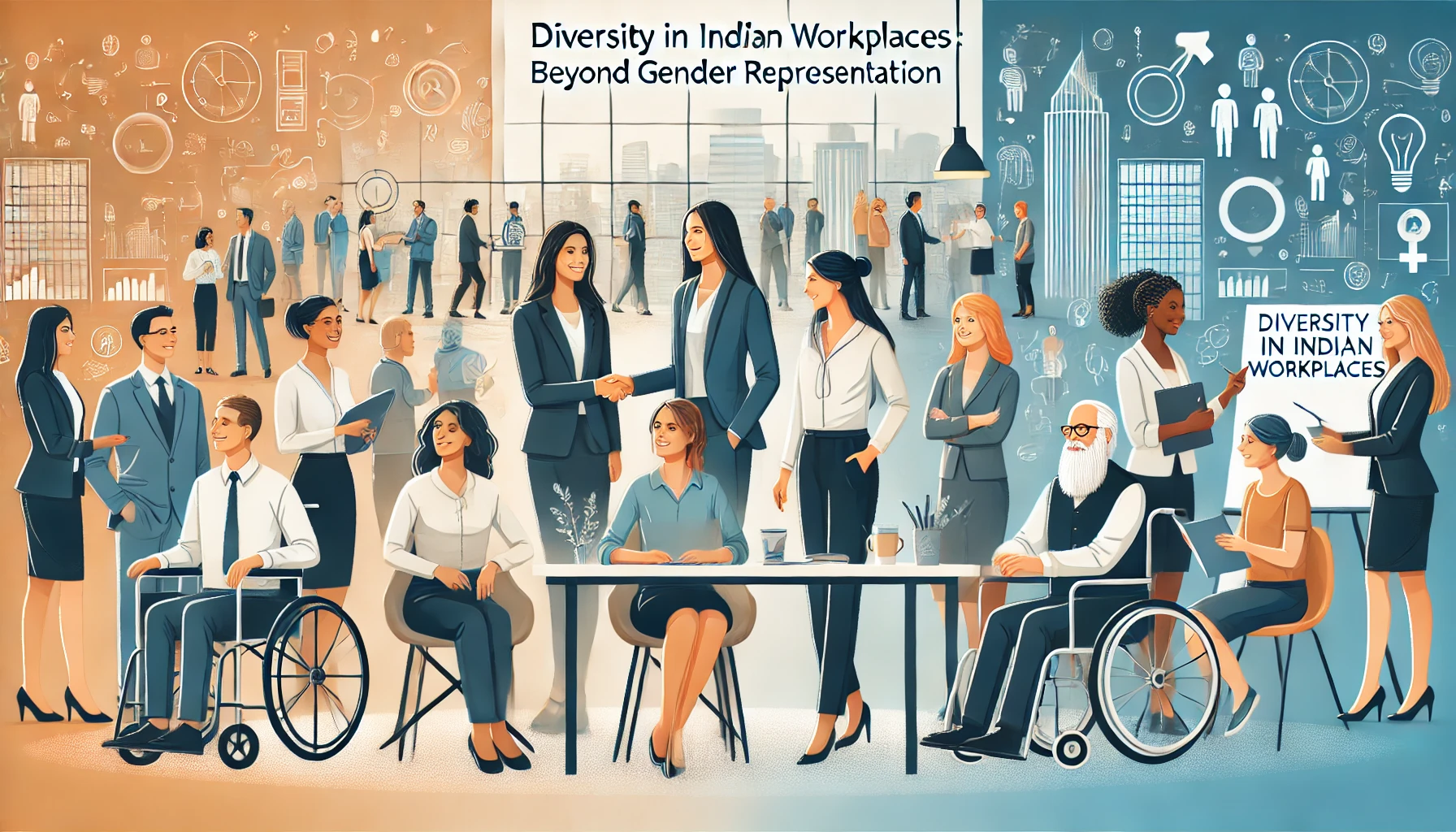Understanding Workplace Diversity in India
Workplace diversity refers to a workforce comprising individuals of varying genders, ages, cultural backgrounds, religions, physical abilities, and sexual orientations. In India, this concept holds a unique significance due to the country’s cultural and regional richness. Embracing this diversity can bring immense benefits to organizations by unlocking creativity, innovation, and resilience.
The Importance of Diversity in Indian Workplaces
Diversity isn’t just a moral responsibility; it’s a business imperative. Studies have consistently shown that diverse teams perform better, solve problems more effectively, and drive innovation. In India, with its rapidly growing economy and youthful workforce, diversity is critical for long-term success. A diverse workforce fosters better decision-making, enhances customer satisfaction, and contributes to a stronger brand reputation.
Moving Beyond Gender Representation
Cultural and Regional Diversity
India is a land of diverse languages, traditions, and cultures. However, workplaces often struggle to reflect this diversity, especially in leadership roles. For example, employees from smaller towns or underrepresented states may face barriers in
accessing opportunities. Embracing regional diversity helps organizations tap into a wider talent pool and gain fresh perspectives.
Generational Diversity
Indian workplaces now host four generations: Baby Boomers, Gen X, Millennials, and Gen Z. Each brings unique skills and work styles. For instance, Baby Boomers may value stability and long-term goals, while Gen Z thrives on innovation and rapid feedback. Bridging these generational differences is crucial for fostering collaboration and knowledge-sharing.
Differently-Abled Employees
Despite progress, the inclusion of differently-abled employees in Indian workplaces remains limited. Organizations need to focus on creating accessible infrastructure, offering assistive technologies, and fostering a culture of acceptance. Initiatives like hiring quotas and targeted training programs can significantly improve representation.
LGBTQ+ Inclusion
The decriminalization of Section 377 in 2018 was a historic milestone, but genuine inclusion of LGBTQ+ employees requires more than legal changes. Companies need to adopt policies that ensure equal benefits, create safe spaces, and actively combat workplace discrimination. Celebrating Pride Month and organizing sensitization workshops can help foster acceptance.
Challenges Unique to the Indian Context
- Unconscious Bias: Deeply rooted cultural norms often lead to biases inhiring, promotions, and workplace interactions.
- Resistance to Change: Traditional hierarchies can make it difficult to implement progressive policies.
- Lack of Awareness: Many organizations lack the resources or understanding to develop effective diversity initiatives.
- Limited Representation in Leadership: Leadership positions in Indian companies are often dominated by a homogenous group, limiting diverse voices in decision-making.
Practical Strategies for Inclusive Workplaces
- Leadership Commitment: Inclusion starts at the top. Leaders mustchampion diversity initiatives and lead by example.
- Regular Sensitization Training: Conduct workshops on unconscious bias and cultural sensitivity to build awareness among employees.
- Flexible Work Policies: Offering flexible hours and remote work options can make workplaces more inclusive for parents, caregivers, and differently-abled employees.
- Employee Resource Groups (ERGs): ERGs for women, LGBTQ+ employees, and other underrepresented groups can provide support and amplify their voices.
- Transparent Metrics and Accountability: Track diversity metrics regularly and share progress to ensure accountability.
- Mentorship Programs: Pair senior employees with diverse junior talent to nurture growth and break down barriers.
Lessons from Leading Indian Corporations
1. Tata Steel: Transgender Hiring Initiative
Tata Steel has been a trailblazer in hiring transgender employees, setting an example for inclusive practices in traditionally male-dominated industries.
2. Wipro: LGBTQ+ Policies
Wipro’s inclusive policies include same-sex partner benefits and an active employee resource group for LGBTQ+ employees.
3. Mahindra & Mahindra: Women in Leadership
Mahindra’s initiatives to promote women in leadership roles have helped break stereotypes and inspire change.
4. Hindustan Unilever: Regional Talent Development
HUL’s focus on developing talent from Tier 2 and Tier 3 cities showcases the importance of regional diversity.
Insights from Global Best Practices Adapted to India
Global companies have made significant strides in diversity and inclusion. Indian organizations can learn from these practices:
- ReverseMentoring:CompanieslikeMicrosofthaveimplementedreverse mentoring, where younger employees guide senior leaders on technology and modern trends.
- Blind Recruitment: Removing identifiers like name, gender, and age from resumes can help reduce unconscious bias.
- Cultural Celebrations: Firms like Google organize events to celebrate cultural diversity, fostering a sense of belonging.
Leveraging Technology for Greater Inclusion
Technology can be a powerful enabler of diversity. AI tools can help identify biases in hiring and promotions, while collaboration platforms like Slack and Microsoft Teams can bridge gaps among employees from diverse locations. Virtual reality (VR) can also be used for diversity training, offering immersive experiences that build empathy and understanding.
Future Trends in Workplace Diversity in India
- Increased Focus on Intersectionality: Understanding how various aspectsof identity intersect will help companies develop more nuanced policies.
- Greater Representation in Leadership: Companies will prioritize grooming diverse talent for leadership roles.
- Sustainability and Diversity: Younger employees are pushing for workplaces that prioritize environmental and social governance (ESG), including diversity.
- Tech-Driven Inclusion: Automation and AI will continue to play a significant role in identifying and addressing diversity gaps.
A Call to Action for Indian Companies
Diversity is not a one-time initiative but an ongoing journey. Indian organizations must commit to creating workplaces that celebrate differences and leverage them for collective growth. By embracing diversity in all its forms, companies can unlock the full potential of their workforce and set a global example for inclusivity.



